 |
 |
 |
| |
Skeletal muscle mitochondrial proteins discordantly regulated by insulin in HIV+ with insulin resistance: a mass spectrometry-based muscle proteomics study
|
| |
| |
Reported by Jules Levin
10th Intl Workshop on Adverse Drug Reactions and Lipodystrophy in HIV, Nov 6-8 2008 London, UK
Kevin E. Yarasheski, Dominic N. Reeds, Sam Smith, Ling Munsell, James Malone, Henry Rohrs, R. Reid Townsend
Washington University School of Medicine
St. Louis, MO. USA
Support: NIH
No conflicts to disclose
From Jules: an exercise program can address insulin resistance.
AUTHOR CONCLUSION
Analytical platform = candidate mt proteins that require confirmation. These mt proteins represent potential biomarkers and sites of pathogenesis.
Mt proteins = potential biomarkers and sites of pathogenesis in HIV+ insulin resistance.
Structure and function of the muscle intramitochondrial membrane and mt cristae may be altered in HIV+ insulin resistance.
This may impair mt metabolite and ion flux, oxidative phosphorylation, and mt ATP production during insulin stimulation.
BACKGROUND
Insulin resistance (IR) and diabetes are common metabolic complications in H IV-infected people treated with ART. Skeletal muscle is mitochondria (mt)-rich and the primary site for insulin-stimulated glucose storage. Impairments in human muscle mt protein expression patterns and activities might be involved in the pathogenesis of HIV+ IR. We aimed to identify and characterize human muscle mt protein expression patterns associated with HIV+ IR.
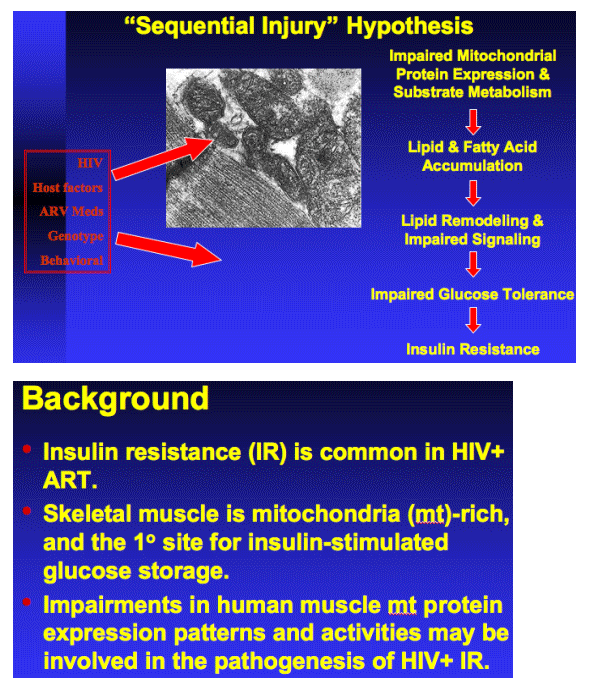

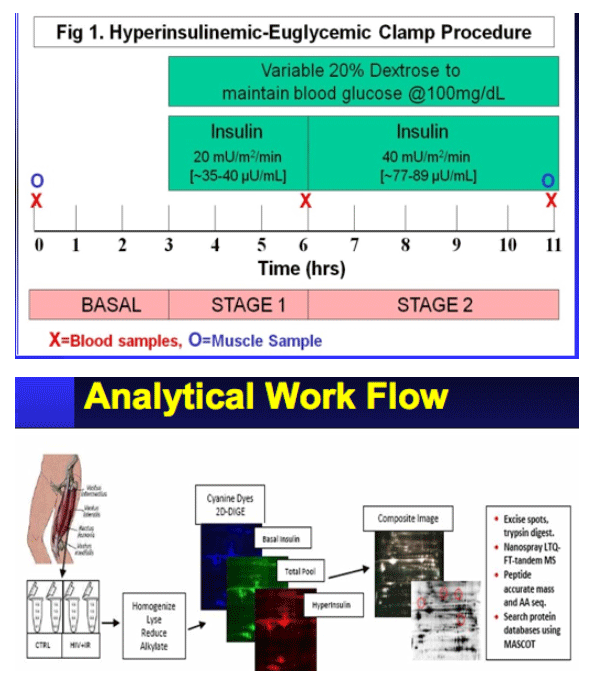
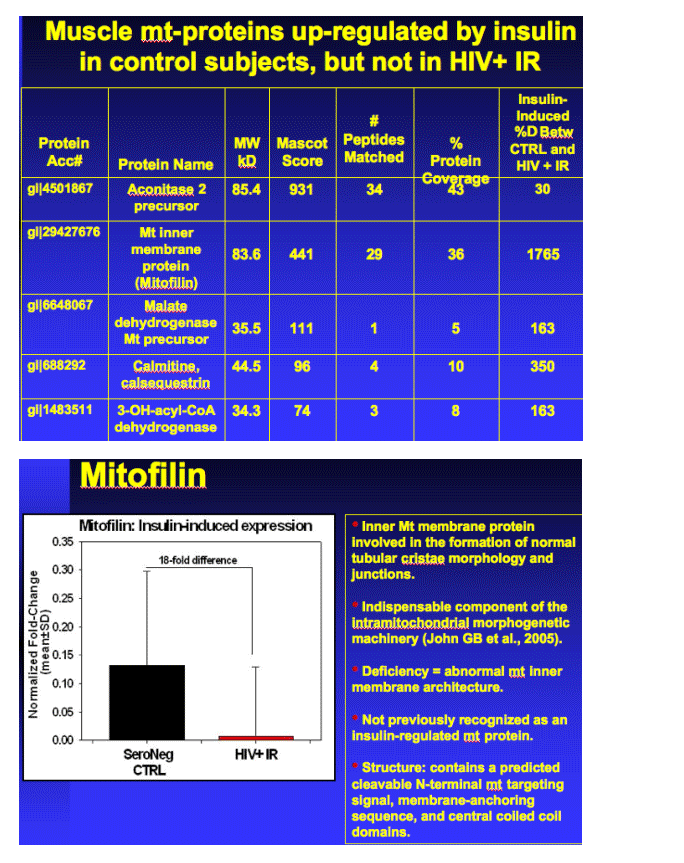
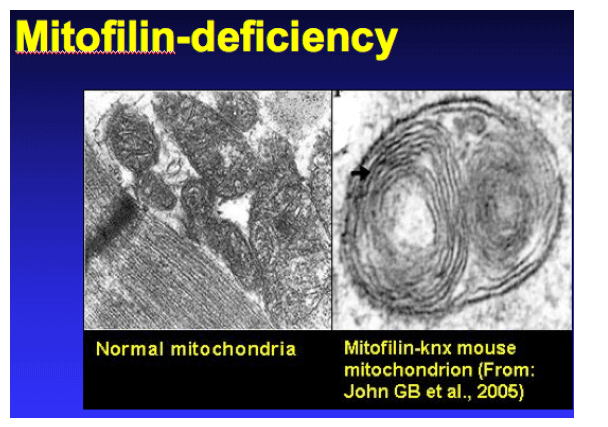
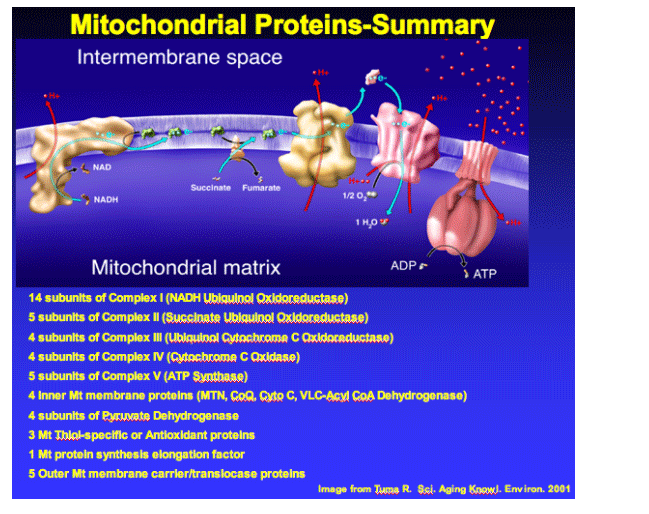
|
| |
|
 |
 |
|
|